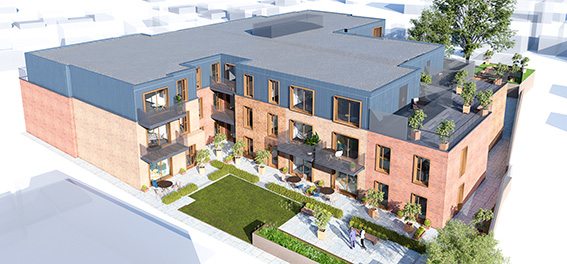
What Are the Benefits of Using DFMA in Construction?
If you read our latest post on the definition of DFMA, you may be thinking that it could be something that would help your latest construction project.
DFMA involves using varying techniques and methods to optimise the design and manufacture process of a building.
But how could it benefit you and your build?
Well, here are five key advantages of getting DFMA advice from the team at Studio Anyo.
Let’s take a look.
Key Advantages of Using DFMA in Construction
Reduced Construction Time
By designing buildings with DFMA principles in mind, construction time can be drastically reduced.
DFMA allows for greater precision and efficiency during the assembly process, which can significantly reduce the time needed to construct a building, whether it be a large scale building or something much smaller, such as a garden office pod.
This is because it focuses on manufacture, assembly, and the servicing of components and sub-assemblies, meaning that all of these areas are assessed and any way that the construction process can be streamlined is used.
This could be simplifying the shape to speed up manufacturing, or creating self-aligning parts to make assembling the components together much quicker.
DFMA covers all bases and leaves no stone unturned when optimising the process of design and manufacture and the components that are created are designed with a quick and simple construction in mind.
Improved Quality:
DFMA can improve the quality of construction projects by reducing the potential for errors or defects during assembly.
By eliminating unnecessary design complexity, DFMA can also improve the overall quality and durability of a building.
The process of standardising components and making them as simple as possible is a great way of producing many components without having to change dimensions and materials on each one to ensure quality is kept to a maximum.
Off-site construction is also a great way of checking your components before sending them on-site where it may be harder to assess them and more time-consuming.
Quality control is a key component of a successful project, and if you can keep the number of errors and snags down, the time and cost of completing a project should also be kept down.
Cost Reduction
DFMA can lead to cost savings in construction projects by reducing waste and improving efficiency.
By simplifying and standardising the assembly process, DFMA can reduce labor costs and the overall cost of materials needed for the construction project.
There are many other ways DFMA can also reduce costs, including making the construction process efficient which will reduce in less hours spent on labour and less days and equipment needed to complete the build.
The point about reducing waste is an important one, and this is a major reason that budgets often run over in construction projects.
A simple, standardised construction means that the exact materials needed to manufacture each component will be easy to judge and that no excess money is spent when it is not needed. With this in mind, plus an optimised manufacturing process, there can be some huge savings by adopting an approach with a DFMA influence.
Enhanced safety
DFMA can improve safety on construction sites by reducing the need for on-site assembly and minimizing the use of heavy equipment.
By manufacturing building components off-site, the risk of accidents during construction can be significantly reduced.
Also, using simplified and standardised components means that there will be less need for any amendments, or difficult joints for example, when the time comes to construct the building.
This will help to reduce the work needed on-site which will in turn reduce the risk of accidents and injuries.
Greater sustainability
DFMA can help improve the sustainability of construction projects by reducing waste and improving energy efficiency.
By optimizing the use of materials and reducing waste during assembly, DFMA can help minimize the environmental impact of construction projects.
This is a key factor for many eco-conscious companies who want to create buildings that aren’t just good for the planet, but also will help the company save energy costs throughout their time using the building.
Using standardised components makes it simple to know what materials are required in the construction stage, and this makes it not just more efficient, but also much less wasteful.
DFMA Advice with Studio Anyo
There are many benefits of using DFMA in your latest construction project, include reducing construction time, improving quality, cutting costs and making the whole process more sustainable.
If you would like to speak to a team who have years of experience applying DFMA methods to construction projects, then why not get in touch with Studio Anyo.
We have a team of architects, MMC advisors, and DFMA experts who can help streamline and optimise the design and manufacture of your next building.


